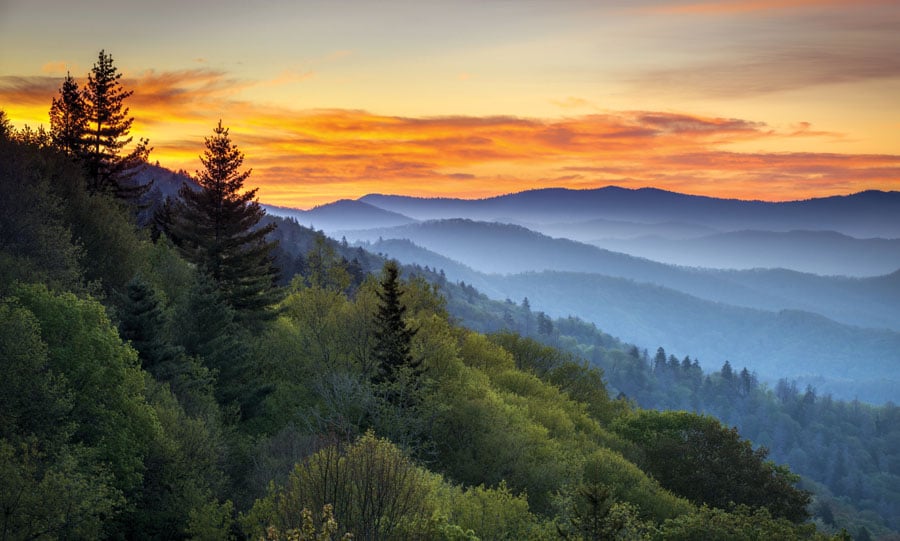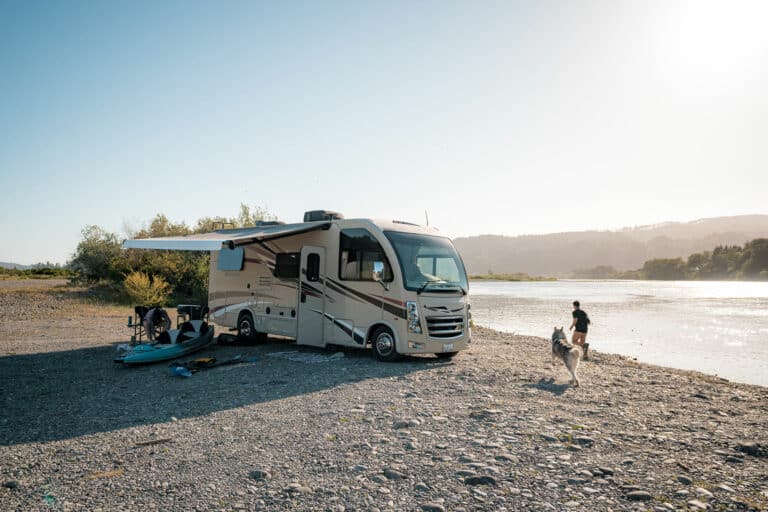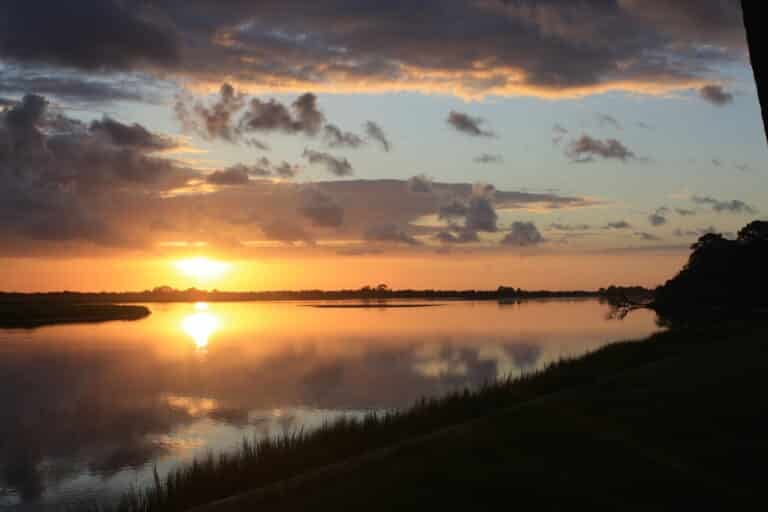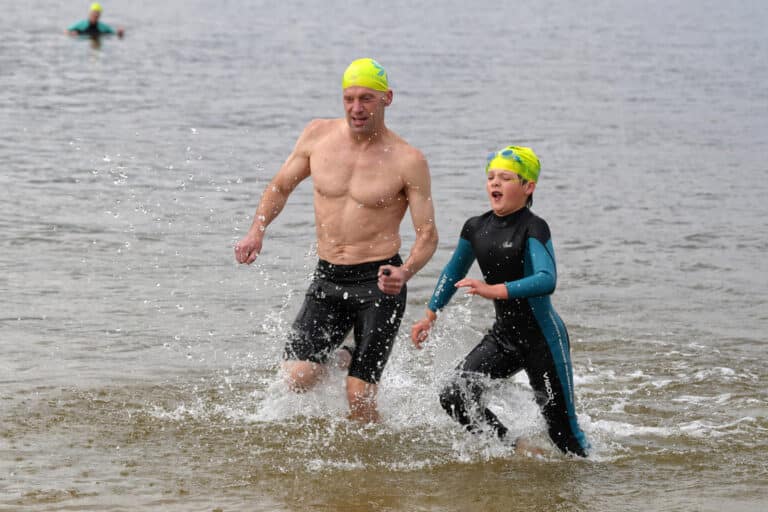Eva Beaule wasn’t sure what might happen when she and her husband, Mike, opened an outfitter in the tiny community of Mendota, Va. several years ago. Their property sits in an ideal location along the North Fork of the Holston River not far from the Tennessee line, but it takes a long, winding route on narrow roads to get there. “There’s no cell phone service out here,” Beaule says, “and we’re seventeen miles from a grocery store.”
But geographic isolation hasn’t stopped the Beaules’ shop, Adventure Mendota, from booming. While business started slow—no one came out to Adventure Mendota’s opening day—thousands of customers have since come to float the North Fork. The outfitter is now one of the most popular outdoor businesses in the region.
The Beaules aren’t alone in their success. In fact, the story of Adventure Mendota—an entrepreneur growing a dream into a thriving outdoor business—could apply to almost any corner of Appalachia. Outfitters have sprouted from the pastoral banks of the North Fork to urban stretches of the French Broad. Mountain communities are reinventing themselves to attract hikers, mountain bikers, and climbers. Revamped downtowns across the region are complete with microbreweries and Airbnbs. And the region’s national forests and state parks are being reimagined not just as weekend getaways but as economic support systems for small towns and entire states alike.
A quick look at the numbers shows just how much of an economic behemoth the outdoor industry has become. In 2017, the Outdoor Industry Association estimated that outdoor recreation accounted for nearly $900 billion in consumer spending and just over 7.5 million direct jobs nationwide—more than the coal and gas industries combined. Those trends hold closer to home in the Blue Ridge. A recent report by the Outdoor Alliance found that the Nantahala and Pisgah National Forests—just two of more than ten national forests across the larger Appalachian region—host 4.6 million visitors annually and plug $115 million into local economies each year.
As impressive as those figures are, questions remain about what role outdoor recreation has in the region’s economic future. Can recreation replace the extractive industries that have dominated the mountains for more than a century? Are outdoor entrepreneurs really building the base of a new economy, or are their small businesses simply feel-good stories without lasting economic impact? Finding the answers to those questions is one of the biggest challenges currently facing Appalachia—one that may shape the region for generations to come.
The Outdoor Economy by the Numbers
$9 billion in annual consumer spending on outdoor recreation in West Virginia
366 full-time jobs supported by mountain biking in North Carolina’s Nantahala and Pisgah National Forests
7,500 unique climbers visiting Kentucky’s Red River Gorge annually. Visitors spend an estimated $3.6 million each year.
$13.61 generated for every dollar of tax revenue provided to Virginia state parks in 2016
—Outdoor Industry Association, Outdoor Alliance, Eastern Kentucky University, Virginia Association for Parks
Growing an Industry
It’s impossible to understand the growth of the East’s outdoor economy without first considering the historical arc of land use trends across Appalachia. From early European settlement through the mid-1900s, the predominant force in the Appalachian economy was resource extraction: timber harvesting along the Blue Ridge, coal to the west along the Appalachian Plateau, and agriculture in the Great Valley in between.
In fact, many of the region’s national forests and parks were created as a reaction to the ecological devastation caused by those industries decades earlier. President Franklin D. Roosevelt acknowledged as much during his address at the 1940 dedication of Great Smoky Mountains National Park, stating that “we realize now that we committed excesses which we are today seeking to atone for.” That atonement paved the way for public lands that became hubs of outdoor activity across the nation.
Outdoor businesses began to capitalize on those assets later in the 20th century, with outlets like Western North Carolina’s Nantahala Outdoor Center leading the charge. The center opened in 1972 at the intersection of the Appalachian Trail and Nantahala River Gorge and has since grown into one of the nation’s leading outfitters, producing Olympic whitewater champions and hundreds of regional jobs. In the decades since its creation, a litany of businesses and communities have followed suit to build a thriving outdoor economy, even as traditional industries have waned.
Todd Christensen has watched that transition throughout his career. Christensen, recently retired as executive director of the Southwest Virginia Cultural Heritage Foundation, has helped lead efforts to revitalize distressed communities throughout 19 Virginia counties. In many ways, Christensen’s region serves as a microcosm for how a decline in extractive industries has catalyzed an increased focus on the outdoors. Over the past few decades, manufacturing employment in Southwest Virginia fell by half, agricultural jobs declined, and coal mining jobs dropped by nearly 70 percent. Those impacts, Christensen says, left many communities looking for new economic options.
“The big opportunity I think a lot of people saw was outdoor recreation,” he says. Southwest Virginia’s communities began marketing outdoor assets residents had taken advantage of for decades.
“It wasn’t that there wasn’t anybody doing any outdoor recreation. It wasn’t that the assets weren’t there,” Christensen says. “It was about connecting them all to a common theme to brand the region.” Since 2001, the region has added nearly 3,000 leisure and hospitality jobs, along with a more than $300 million increase in travel expenditures.
While many communities in Southwest Virginia are just starting to capitalize on the outdoors, other areas, such as Western North Carolina, have had a focus on the outdoors for generations.
[nextpage title=”Read on!”]
“Outdoor recreation and tourism has been a part of our local economy for over 100 years,” stresses Clark Lovelace, executive director of the Brevard/Transylvania Chamber of Commerce. Lovelace cites the Pisgah National Forest and the region’s history of hosting summer camps—both of which date back as far as the early 1900s—as examples of the region’s outdoor roots. “In more recent years,” Lovelace says, “the addition of DuPont State Recreational Forest and Gorges State Park…has led to tremendous growth in the local tourism industry.”
In 1986, the Transylvania County Tourism Development Authority (TCTDA) was formed to promote the county’s outdoor assets—a factor that became important when the area’s largest manufacturing companies left starting around the year 2000. Since then, Lovelace says that outdoor recreation has “gone from an important industry to a leading industry.” The TCTDA reported close to $90 million generated in tourism revenue in 2015 alone, with accommodations revenue—a key tourism indicator—nearly doubling since 2010.
Not Just a Numbers Game
While the revenue figures touted by regional communities paint an encouraging picture, many experts argue that the outdoor economy alone isn’t sufficient to save many areas, especially those suffering from severe economic decline.
“Tourism is so important, but we cannot put all of our eggs in one basket,” says Shannon Blevins, associate vice chancellor at The University of Virginia’s College at Wise. Blevins works with rural communities across the Appalachian coalfields that are looking to diversify their economic strategies, and she emphasizes the dangers of putting too much focus on any single industry. For starters, she says, a tourism-based economy isn’t recession-proof. “We don’t want to get back into that same situation where we are single-threaded on one industry,” she says.
Blevins also points out that many outdoor jobs pay lower wages than other industries, a discrepancy that is all too real. According to the U.S. Bureau of Labor Statistics, workers in the recreation industry earn a median income of around $24,000 per year nationwide. Compare that to the median level of $50,000 or so in annual wages taken home by a coal miner, and it becomes easy to see the challenges associated with using outdoor businesses to replace high-wage extractive industries.
Still, the intangible benefits of the outdoor industry can enhance other dimensions of the economy. As one example, Blevins stresses the impacts that tourism and recreation can have on a community’s quality of life. “If it’s done right,” Blevins says, strengthening an outdoor economy “increases the impression that people have of the area.” That, in turn, can increase a community’s exposure and draw in new investment.
Lovelace agrees. “Outdoor recreation and quality of life for residents are directly tied together” for the Brevard and Transylvania County area, he says. In addition to retirees who move to the area after leaving the labor market, Lovelace points out that many working families who move to Transylvania County are choosing quality of life over the size of their salaries as a determining factor in selecting a new home.
In other cases, recreation can also attract new manufacturing sectors altogether. The broader Western North Carolina region is one example, as it now plays home to a burgeoning outdoor gear manufacturing industry that is capitalizing on the region’s outdoor culture. The Outdoor Gear Builders of Western North Carolina, a group of 27 regionally-based companies, estimated in 2014 that manufacturers contributed nearly 500 jobs to the regional economy, with a $6 million impact in local sourcing.
Lovelace credits the quality of life provided by the outdoors as helping to bring several manufacturers to his region, citing it as “key” to economic growth. The Transylvania Economic Alliance—the county’s economic development organization—now even lists outdoor gear manufacturing as one of its six target markets, alongside tourism.
Building on Success
If a single rule has emerged from the region, it’s that the recipe needed to harness the outdoor recreation economy’s benefits may look different from one community to the next.
Some communities, like Erwin, Tenn., are looking downtown. Erwin is home to the Appalachian Trail and Nolichucky River, but its economy has historically been grounded on the transport of coal via the CSX railroad. Jamie Rice, an Erwin business owner and president of the community group RISE Erwin, says that economic landscape changed when Erwin’s railyard closed in 2015.
“We were really in mourning,” Rice says. In response, residents began strategic planning sessions, where Rice says “the thing we kept identifying with was our geography.” One result of those discussions was a Great Outdoors Festival that links Erwin’s downtown businesses to the trail and river. Rice estimates the event attracted nearly 7,000 people in its inaugural year. “We were thrilled with that number,” she says. “And we know it’s going to continue to grow.”
In other areas, taking the outdoor economy to the next level means playing off of existing strengths. Virginia’s Appalachian Spring initiative is doing just that: taking eight popular outdoor “anchors”—recreation meccas like the New River, Mount Rogers, and Cumberland Gap National Historical Park—and tying them together in a regional branding strategy where political boundaries are blurred.
“The whole region has developed a spirit of collaboration and understanding that what’s good for one part of the region is good for the other,” Christensen says. Rather than crafting competing economic plans behind closed doors, community leaders are having opportunities to share best practices for engaging visitors with the outdoors. Emerging from the initiative is the recognition that a region’s strength often lies in its diversity.
If that diversity is found in the sum of a region’s parts, small businesses like Adventure Mendota play a key role. The outfitter sits between two of Appalachian Spring’s anchor areas, the Clinch River and Mount Rogers, and that sense of community is not lost on its owner. Eva Beaule credits a group of leaders near Mendota—what she refers to as her “posse”—with helping to spur on the outfitter’s success. It’s a relationship that has to go both ways, Beaule says. “A small business owner cannot wait for people to come to them,” she stresses. “You’ve got to go meet with somebody that you don’t know.”
In fact, supporting a community of outdoor entrepreneurs is a plan for success that holds from a city with a strong outdoor economy like Brevard to a rural coalfield town just beginning to plot out its economic future. Rice, Lovelace, and Blevins all emphasize the role that entrepreneurial support has played in their respective regions. “If you’re able to give people who are already rooted in the area the ability to start their own jobs that are in alignment with their aptitudes, then that is a huge win,” Blevins says.
In that sense, the principles driving the success of Appalachia’s outdoor economy are rooted in the same culture that has supported the region for generations. “The one thing we’ve learned that is so tremendous,” Beaule says, “is that we’ve got a lot of resources in each other.”








